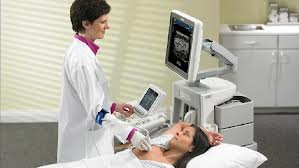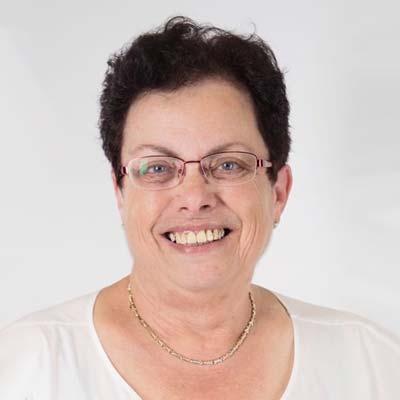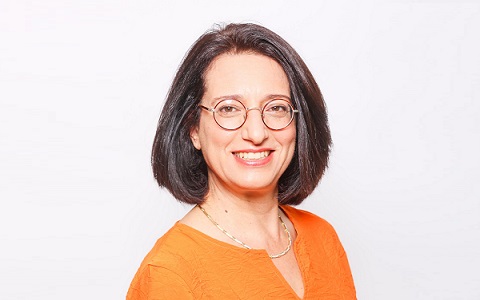Healthcare with Confidence
In November 2018, NCCN published a new guideline on screening and diagnosing breast cancer 2018.3. The guideline includes the latest additions and overviews that are used at the stage of diagnosis in breast cancer. This manual is widely used by Israeli radiologists and oncologists.
Breast changes classification according to BI-RADS scale
In the analysis of screening and mammography studies, the BI-RADS scale is used, which eliminates misunderstanding when analyzing. It is used by oncologists in Israel.
Recommendations for patient management based on the results of ultrasound screening and breast diagnostic mammography are divided into 6 categories:
- Category 1 (negative finding) and category 2 (benign) – a routine screening is being conducted;
- Category 3 (probably benign) – routine screening after 6 months, then after 6-12 and within 1-2 years;
- Category 4 (suspicious lesions similar to malignant ones) and category 5 (practically reliable malignant formations, up to 95%) confirm the fact of the presence of malignant tumors, or having a tendency to degeneration and deterioration of carcinogenicity;
- Category 6 (proven histologically malignant diagnosis) – management of the patient, as in breast cancer.
Doctors for Breast Cancer – Get a Second Opinion
Conducting a diagnostic evaluation with positive physical examination result
An examination begins preferably with a diagnostic evaluation of an ultrasound if the patient is 30-39 years old or a simple cyst has been confirmed. Mammography is also required at the age of 40 years.
Palpable breast masses
Solid mass
According to category 3 BI-RADS (probable benign changes), a routine breast screening is done using an ultrasound scan or using diagnostic mammography after 6 months and for 12-24 months. With category 4 BI-RADS and above, a tissue biopsy of a suspicious mass in the mammary gland is recommended.
Simple cyst
A routine breast screening is performed.
Complex cyst
The cyst contents are taken using aspiration, a physical examination and analysis of the ultrasound findings are taken, as well as, if necessary, diagnostic mammography – after 6-12 months for 1-2 years to assess the course of the process.
Complex mass of cystic and fibrous tissue
A core needle tissue biopsy is performed.
No visual abnormalities
Observation, additional mammography and ultrasound for 1-2 years to assess the course of the process. In the presence of suspicious clinical data – performing core needle biopsy.
Palpable lump in women younger than 30 years
Clinical examination and ultrasound. If there are suspicious formations and cases of cancer in the patient’s family history, diagnostic mammography is additionally performed.
If, after observation by a doctor for 1-2 menstrual cycles, the lump decreases or remains stable, a routine screening should be proceeded. In the case of an increase in the mass size or suspected malignant neoplasm, ultrasound is performed without using of core needle aspiration. In the absence of visible pathological changes in the analysis of ultrasound, but if there is a suspicion of malignancy, an additional mammogram is recommended.
According to category 3 BI-RAD, with probable benign changes, it is recommended to conduct a physical examination every 3–6 months for 1–2 years with optional ultrasound scan. If there is an increase in the mammary gland formation during the observation period, diagnostic mammography and core-needle biopsy are performed. In the absence of changes in the specified time, a routine breast screening is performed.
Discharge from the nipple without palpable lumps
With involuntary discharge from the ductal glands:
- For women under 40 physical examination and training is carried out to eliminate the causes leading to compression of the mammary glands. It is also necessary to inform the attending physician about such cases.
- For women over the age of 40 diagnostic mammography is performed and further diagnostic tests is available if necessary.
If structure of the breast tissue is homogeneous and without change, but there are persistent and unexpected clear discharges or bleeding, there are an ultrasound and diagnostic mammography should be performed according to age criteria.
Categories 1-3 BI-RADS do not require the use of ductograms or MRI after excision of the breast duct. Further, the management options of such patients are:
- Optional duct removal.
- Physical examination after 6 months for 1-2 years with and without diagnostic mammography.
When suspicions increase in 4 or 5 categories of BI-RADS for clinical malignancy, a fine-needle biopsy of the neoplasm, removal of the milk duct and further treatment of breast cancer are performed during the observation.
Asymmetric thickening or nodularity
Must hold:
- In women less than 30 years old in the absence of high risk factors:
- Ultrasound
- Based on the results of the analysis, diagnostic mammography was recommended.
- In women from 30 years:
- Ultrasound
- Diagnostic mammography.
With a benign clinical evaluation in categories 1-3 BI-RADS is a repeated clinical examination every 3-6 months to monitor changes in the mammary gland. Further diagnostic mammography and, if necessary, ultrasound (held after 6-12 months for 1-2 years). If no further changes in the breast are detected, the transition to the routine prophylactic screening is carried out. If cancer is suspected or if it falls into category 4 or 5 BI-RADS, a core needle biopsy of the tissue is performed.
Breast skin changes
If manifestations such as nipple retraction or thickening of the skin on the breast surface are present, bilateral diagnostic mammography with optional ultrasound is performed.
According to categories 1–3 of BI-RADS, a punch biopsy or nipple biopsy is performed.
If you are in the category 4 or 5, BI-RADS a core needle biopsy of the tissue, with an optional puncture biopsy, as well as on the testimony of an oncologist – surgical mass removal should be performed.
Axillary formation
Localized axillary change, which can be unilateral or bilateral, without signs of lymphoma, and in the absence of adenopathy signs in the clinical evaluation findings, and relation with the mammary gland:
- in women under 30 years old – ultrasound;
- from 30 years – ultrasound and mammography.
The core needle biopsy in this case is carried out with palpable axillary mass and suspected cancer in accordance with the categories of categories 4-5 BI-RADS.
Breast pain
In case of cyclic, diffuse and non-local pain in the mammary gland with normal physical condition of the patient and with negative mammography results, treatment is made depending on the pain symptoms.
Focal chest pain :
- for women ≥30 years old – diagnostic mammography with optional ultrasound;
- 30 years – Ultrasound.
For additional information see breast cancer diagnosis.
Source: Breast Cancer Screening and Diagnosis Clinical Practice Guidelines (2018) / National Comprehensive Cancer Network






